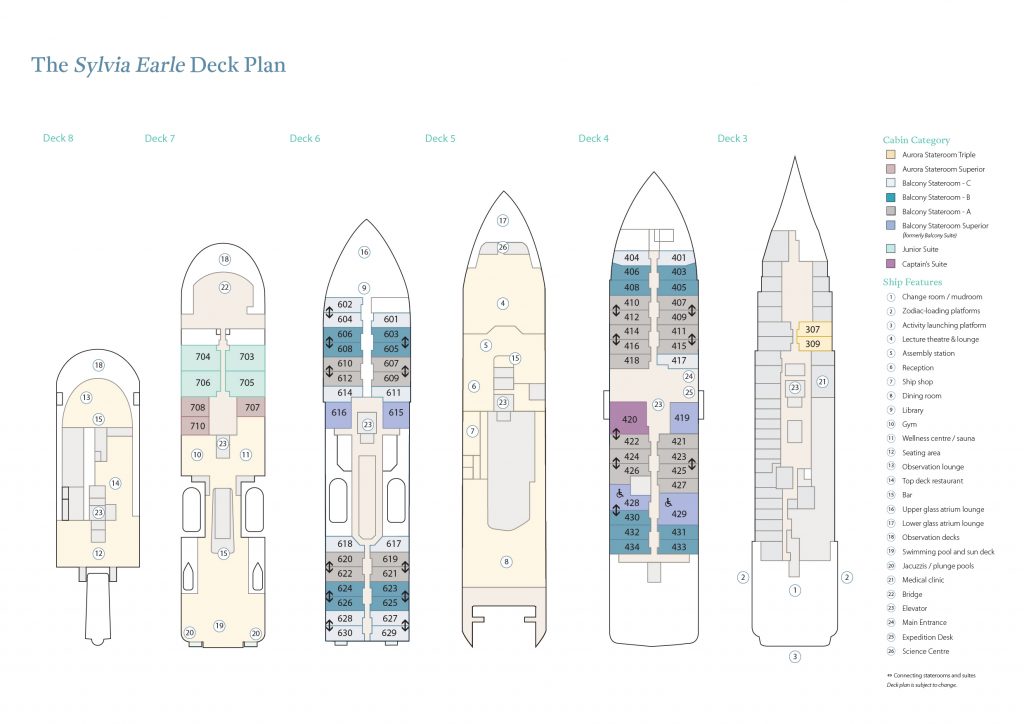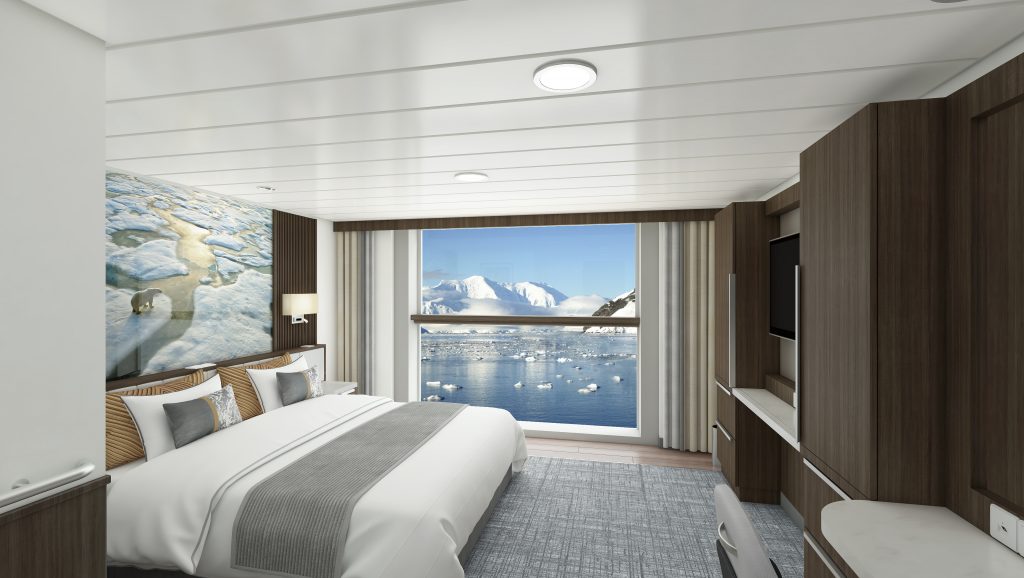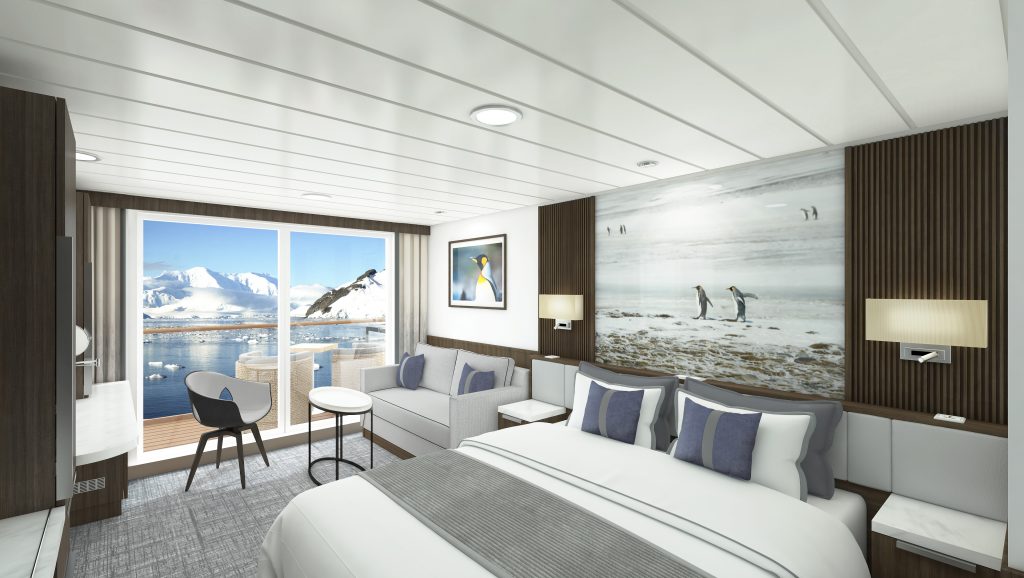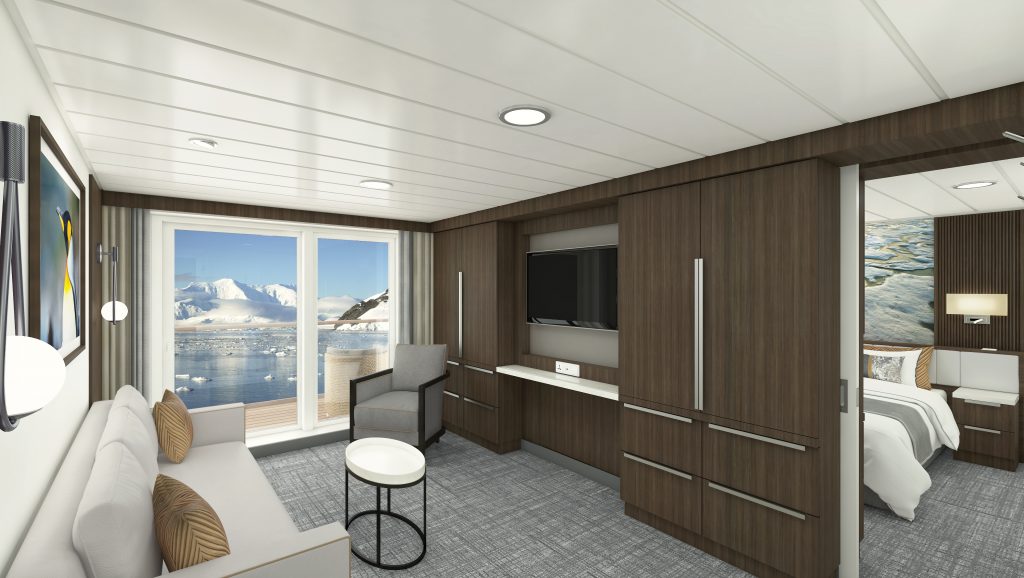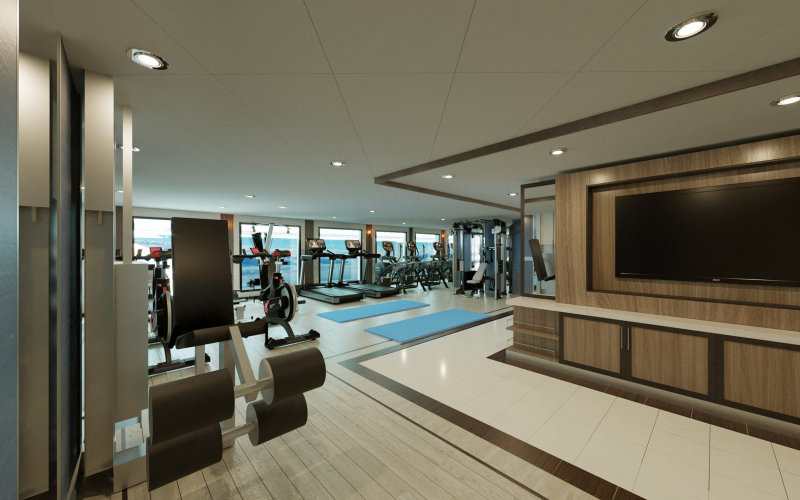Antarctic Explorer – Sylvia Earle, Jan 2025
Antarctic Explorer – Sylvia Earle, Jan 2025
Trip Summary
About the Spirit of Antarctica Fly/Cruise via Punta Arenas Itinerary
Antarctic adventures are best enjoyed midsummer, when near-midnight sun powers an explosion of life along the shore and brightens the thought of camping out, early alpine climbing starts or extended kayaking trips. Penguin highways are busy with traffic as parents hurry to fatten chicks and waterways are alive with whales and seals. We visit historic […]
Itinerary Map
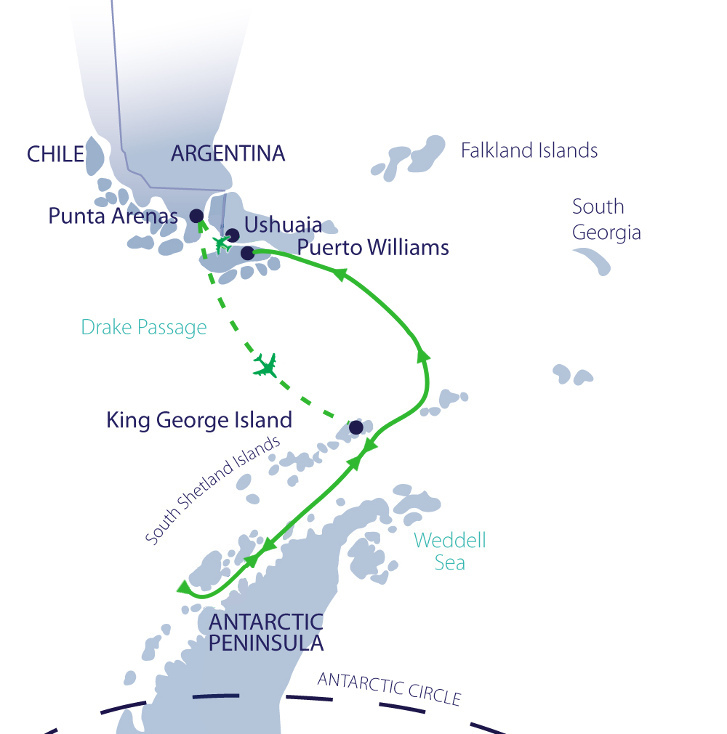
Pricing Information
About the Spirit of Antarctica Fly/Cruise via Punta Arenas Itinerary
Antarctic adventures are best enjoyed midsummer, when near-midnight sun powers an explosion of life along the shore and brightens the thought of camping out, early alpine climbing starts or extended kayaking trips. Penguin highways are busy with traffic as parents hurry to fatten chicks and waterways are alive with whales and seals. We visit historic sites and step onto the most spectacular continent on Earth. Voyage Highlights Antarctica • Explore the most accessible and wildlife-rich region of Antarctica • Daily shore visits and Zodiac cruises offer close encounters with penguins, whales, seals and sea birds • Visit historic research huts and working scientific stations • Be surrounded by massive icebergs and cruise past ancient glaciers • Enjoy the pristine beauty and vast landscapes • Witness the endless sunlight of the midnight sun • Learn about Antarctica’s unique geology, history and wildlife from our expert team • Sleep like an Antarctica explorer and camp on the ice! (weather permitting) • Kayakers will glide through narrow sheltered waterways and fjords, paddle amongst ice floes and drift quietly alongside wildlife.
Detailed Itinerary
Day 1: Punta Arenas, Chile
Expeditioners will gather at the hotel in Punta Arenas, Chile. Situated on the shore of the Strait of Magellan, one of the world’s historic trade routes, Punta Arenas enjoyed its first great boom during the California Gold Rush, when it served as a haven for great clipper ships. When the Panama Canal opened in 1914, it lost considerable shipping, but that trade was quickly replaced by Chile’s international wool trade. Today, Punta Arenas has a mix of cultures, from English sheep ranchers to Portuguese sailors and remains important for Chile’s connection with Antarctica. A great place to start in Punta Arenas is the Cerro La Cruz promontory, which provides panoramic views of the city with its colourful tin roofs along orderly streets. Among the city’s most interesting attractions are the Museo Salesiano de Mayonino Borgatello, started by an order of Italian missionaries, and the Centro Cultural Braun-Menendèz, housed in the mansion of one of the city’s most prosperous families. The museum provides visitors with an eclectic introduction to the region.
The Centro Cultural is equally engaging, offering an intimate glimpse of the life of a prosperous Punta Arenas trading family. For those who enjoy a bit of maritime history, try the Museo Nao Victoria 4.7 mi (7.5 km) north of the city on the way to the airport. This museum’s main attractions are the replicas of three very famous ships, Magellan’s Nao Victoria, the James Caird from Shackleton’s Endurance expedition, and Darwins’, Beagle. Punta Arenas is the third largest city in the entire Patagonian Region and is roughly 880 mi (1400 km) from the coast of Antarctica.
In the evening we will gather for an introduction to our expedition and a briefing on the flight to Antarctica for tomorrow.
Day 2: Punta Arenas to King George Island
Our early morning charter flight from Punta Arenas to Antarctica will take approximately two and a half hours. The flight first takes us over the Strait of Magellan then over the Cordillera Darwin with its magnificent glaciers, narrow austral channels and hidden colored lagoons. Before too long we are out over the Drake Passage and then to King George Island in the Antarctic Peninsula. King George Island is the first landfall in the South Shetland Islands so once you can spot land, you will land shortly.
Our expedition team will be on hand to greet you when you arrive at King George Island. You will board Zodiacs for a quick ride to the Polar Pioneer.
It’s a busy day on board so don’t forget you are in Antarctica now, be sure to take the time to drink in your surroundings as the crew sets course for our first landing.
Days 3-8: Antarctic Peninsula
A host of choices are now open to us and, depending on the ice and weather conditions, the western side of the Antarctic Peninsula is ours to explore. Our experienced leaders, who have made countless journeys to this area, will use their expertise to design our voyage from day to day. This allows us to make best use of the prevailing weather, ice conditions and wildlife opportunities. Because we are so far south, we will experience approximately 18-20 hours of daylight and the days will be as busy as you wish. There is plenty of time for sleep when you get home!
We are always keen to explore new territory, so if the opportunity arises, we will! Who knows where we will go?
During this voyage, there might be an opportunity for the more intrepid to camp for a night on the ice. This will give you the chance to sample the style of adventure that Scott, Shackleton and other legendary Antarctic explorers experienced. Be comforted – our warm and comfortable ship with its hot showers will be only a short distance away!
Once we arrive in the calmer waters of Bransfield and Gerlache Straits, we hope to make landings and/or go kayaking two to three times a day. To get ashore we will use Zodiacs (inflatable rubber boats). You will have been briefed on the workings of these sturdy craft and their use, during our Drake Passage crossing. Sometimes we will cruise along spectacular ice cliffs, or make contact with whales, penguins and seals. In these situations we will appreciate the distinct advantage of being on a small vessel, which gives everyone the opportunity to experience these very special close encounters with wildlife.
Our Western chefs serve hearty meals in our cosy dining rooms. Accompanied by good conversation, they will become a focal point of our shipboard life.
A sample of the many exciting places that we would like to visit follows:
Livingston Island
A unique landing place on the Peninsula – tiny toes of land that are literally alive with wildlife. Here we will find two species of penguins breeding; chinstraps and gentoos.
It is not uncommon to find wallows of elephant seals that are 60 beasts strong. Giant petrels nest on the ridgeline. The vegetation consists of mosses, lichens and the only grass species that grows in Antarctica. All this is set against a stunning backdrop, underneath long black scree slopes at the foot of the mountains and glaciers of Livingston Island.
Half Moon Island
A wildlife rich island tucked into a neat bay at the eastern end of Livingston Island. On a clear day the glaciers and mountains of Livingston Island dominate the scene. There is a large chinstrap penguin rookery tucked in between basaltic turrets colored by yellow and orange lichens. Gulls nest on these turrets and there are often fur seals and elephant seals hauled out on the pebble beaches. At one extremity of the island there is a large colony of nesting blue-eyed shags. At the other end lies a small Argentine station that is sometimes occupied by scientists conducting research on the penguin colony and surrounding waterways.
Deception Island
Visiting Deception Island is like making a journey to the moon. We sail through the narrow opening of Neptune’s Bellows to enter the flooded volcanic crater. Inside is an unworldly scene, virtually devoid of life. Glaciers flow down from the edge of the crater, littered by black volcanic ash. We can explore the lifeless remains of a derelict whaling station and a vacant British base, or climb to the rim of the crater. Steam often rises from the shore indicating that the water is actually warm enough for a swim, for those who dare. Outside the crater, if conditions allow, we might land at Bailey Head to explore the enormous chinstrap penguin rookery that featured in David Attenborough’s Life in the Freezer series.
Paradise Harbor
A protected bay surrounded by magnificent peaks and spectacular glaciers, the rocky cliffs of this unforgettable piece of heaven provide perfect nesting sites for blue-eyed shags, terns and gulls. The serenity of Paradise Harbor envelops us once the sound of the dropping anchor fades from our ears. This is a haven for whales and we keep our eyes open for humpbacks, orcas and minkes, as well as crabeater seals, as we explore the bay in Zodiacs. Imagine being so close to a whale that when he surfaces to blow, the fishy spray of his exhalation momentarily blurs your vision. Words cannot describe this experience.
Lemaire Channel
If the ice conditions allow, standing on the bow of Polar Pioneer and quietly moving through the narrow Lemaire Channel could be one of the highlights of our voyage. Cliffs tower 2,000 ft (700 m) directly above the ship. The water can be so still that perfect reflections are mirrored on the surface. Gigantic icebergs clog the channel, creating navigational challenges for our captain and crew; occasionally they may even obstruct our passage.
Hydrurga Rocks
This group of low-lying unprotected granitic rocks protrude from the sea, swept by ocean swells. At first these rocks appear uninteresting, but on closer investigation, calm channels lead to a hidden interior where Weddell seals are hauled out on protected snow beds and noisy chinstraps raise their families on rocky platforms. Hydrurga is Latin for leopard seal, and on occasions we see some skulking in the shallows. There are many places to simply sit and watch the rise and fall of clear green water and listen to the magic sounds and calls of the wildlife.
Other places we may visit around the Antarctic Peninsula are: Petermann Island; Penola Strait; Neko Harbor; Antarctic Sound; and Scientific Bases of Ferraz (Brazilian), Vernadsky (Ukrainian) or Port Lockroy, a historic British base that is now a museum and post office.
Days 9-10: Drake Passage
Time to head back to Argentina’s Tierra del Fuego, with lectures and videos to complete our Antarctic education. This is a time for reflection and discussion about what we have seen and felt, and the impact this voyage has had on our attitude to life.
As we approach the tip of South America, our Captain may sail close to legendary Cape Horn, weather conditions permitting.
Day 11: Beagle Channel, Ushuaia, Argentina
During the early morning we cruise up the Beagle Channel, before quietly slipping into dock in Ushuaia. It’s a busy time, saying farewell to our crew and to fellow passengers who have shared the intensity of exploring this magnificent white wilderness. We head off in our different directions, hopefully with a newfound sense of the immense power of nature.
Welcome Aboard the Sylvia Earle
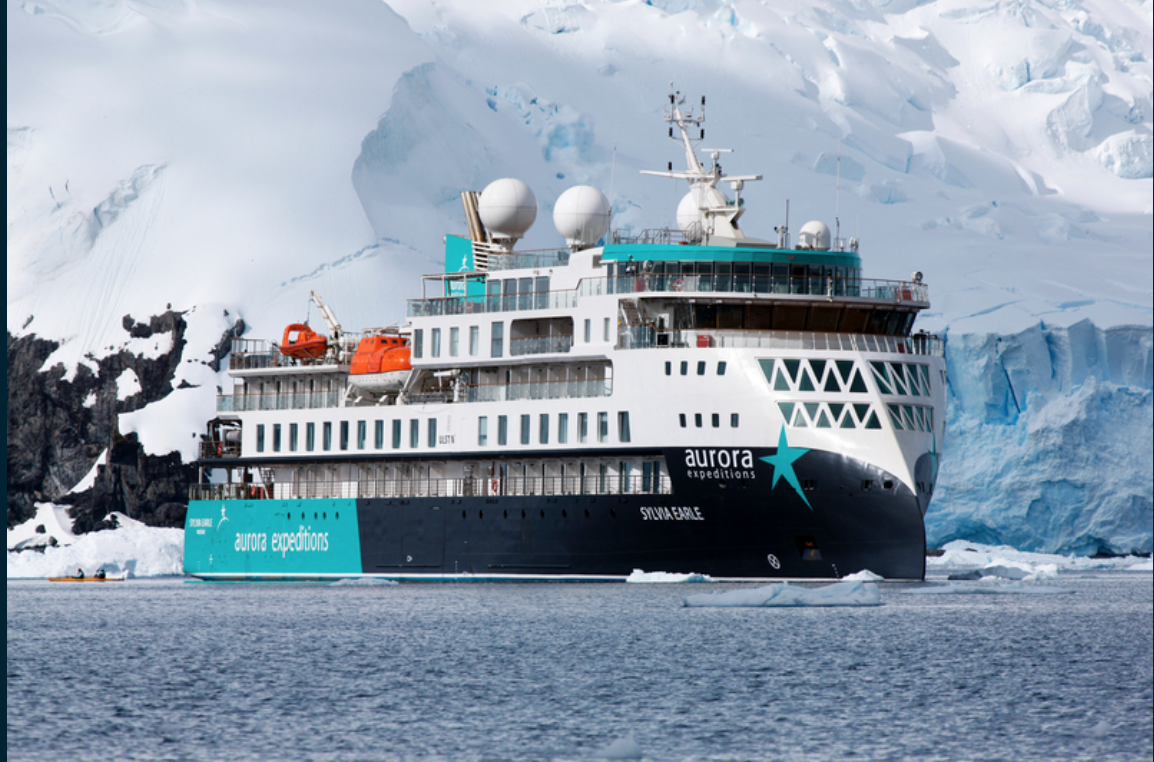
Due to sail soon, this new ship honours the highly accomplished marine biologist, oceanographer and explorer, Dr. Sylvia Earle. As the first female chief scientist of the U.S. National Oceanic and Atmospheric Administration, and named by Time Magazine as its first Hero for the Planet in 1998 – this vessel pays tribute to Dr. Earle’s long-standing conservation efforts for marine protected areas and ocean wildlife. Dr. Sylvia Earle will be involved in the development of her namesake.
They drew on centuries of collective experience to map out the Sylvia Earle: purpose-built for expeditions to the most remote places on earth. Featuring the revolutionary Ulstein X-BOW®, this allows the ship to cross oceans more comfortably and efficiently, and with expansive observation decks to bring you closer to the environment, inviting communal areas and unsurpassed environmental credentials, the Sylvia Earle offers the perfect base camp for adventures at the outer limits of human exploration.
Accommodating an average of 130-140 expeditioners per voyage, every cabin on the Sylvia Earle has an ocean view and nearly all have balconies. The ship also features a modern lecture lounge, multiple observation areas, Zodiac launching platforms, a restaurant serving excellent meals, a gym and wellness centre, jacuzzis, a mudroom and many other amenities.
Technical Specs
Capacity: 132
Staff: 15-18
Crew: 47-56
Cabins: 71
Decks: 8
Length: 104.4m
Breadth: 18.2 m
Draught: 5.3m
Cruising Speed: 10-12 Knots
Full Speed: 15.5 Knots
Gross tonnage: 7400
Registry: Bahamas
Active Stabilizers
Cabins & Amenities
The Sylvia Earle offers eighty comfortable staterooms ranging from porthole to balcony categories, all with en suite bathrooms and plenty of storage space. All staterooms feature twin or king bedding configuration.
Aurora Stateroom Triple Share (15 – 23 sqm): Located on Deck 3. Porthole, en suite
Can be converted to a Triple Stateroom
Aurora Stateroom Superior (20 – 22 sqm): Located on Deck 7
King or twin beds, en suite
Balcony Stateroom Category C (21 – 31 sqm):Located on Deck 4.
Private balcony, ensuite
Balcony Stateroom Category B (21 – 31 sqm): Located on Deck 4.
Private balcony, ensuite.
Balcony Stateroom Category A (21 – 31 sqm):Located on Deck 4.
Private balcony, ensuite.
Balcony Stateroom Superior (36 sqm): Located on Deck 7.
– Private balcony, ensuite and lounge.
– Some of these rooms are equipped with wheelchair accessible bathrooms
Junior Suite (44.4 sqm): Located on Deck 7.
– Private balcony, ensuite and lounge.
– 1 free pair of binoculars per suite
– 1-hour spa treatment per person (valid on 1-hour massage or facial treatment only)
– Free stocked mini bar (stocked once only)
– Gratuities/tips for crew included – to the value of AUD$15 per person per day
– 1 free bottle of champagne per suite
Captain’s Suite (46.3 sqm): Located on Deck 4.
– Private balcony, ensuite and lounge.
– 1 free pair of binoculars per suite
– 1-hour spa treatment per person (valid on 1-hour massage or facial treatment only)
– Free stocked mini bar (stocked once only)
– Gratuities/tips for crew included – to the value of AUD$15 per person per day
– 1 free bottle of champagne per suite
Ship Facilities:
- State of the Art Lecture Facilities
- Science Centre & Lounge
- Library
- Mudroom
- Swimming Pool & Sun Deck
- Sauna, Spa & Gym
- Dining
- Bars & Lounges
Notes
- Flights included for Fly/Cruise itineraries
- All Antarctic voyages include one night’s pre-voyage accommodation and arrival airport transfer (on selected preferred flights)
- Single costs are 1.7 times the twin rate in all cabin categories
- Please note that emergency evacuation insurance is mandatory for all passengers joining an expedition to Antarctica.
- Adventure options must be pre-booked and paid for prior to start of the trip. Space is subject to availability. Some activities require experience.
Optional Adventure Activities:
- Kayaking
- Snowshoeing
- Ski/ Snowboard Touring
- Alpine hiking/climbing
- Polar Diving
- Stand-up paddleboarding
- Shackleton Crossing in South Georgia
- Camping (Free of Charge)
- Photography (Free of Charge)
Ask us about pricing for your preferred adventure option!
